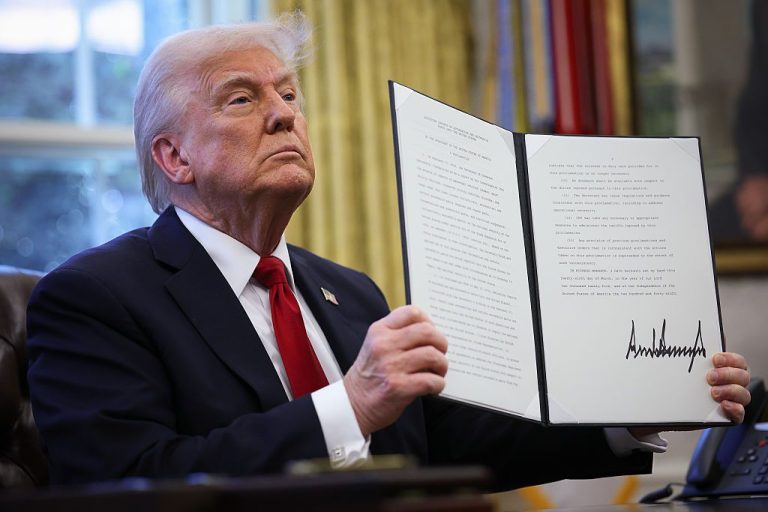So far, the crypto market has not been behaving as expected under the Trump administration. Investors wanted regulatory reforms and policies like Bitcoin’s strategic reserves to raise prices considerably. But that was the opposite. Bitcoin fell into the mid-80,000 for most of March from $100,000 to the mid-80,000, well beyond the early highs of the year.
Crypto prices suffer increasingly correlate with traditional assets such as stocks and bonds that have been hit by macroeconomic uncertainty. Customs Duties – Additional charges the US is based on imports from other countries – Wall Street is worried about a global recession. Crypto investors avoid crypto assets that are considered relatively dangerous.
“This is all about the market” and “risk risk appetite” continues to deteriorate, driving the wedge between crypto assets and gold at the time. This is the “safe shelter” of choice.
“(That’s not something that central bank FX reserve managers will push for. They have been a source of concern for them for a long time.”
As global financial and trade systems become more fragmented, investors are looking for alternatives to risky assets, including the dollar. For now, it means it will turn into gold, which has increased by 18% since the start of the year.
But that could change, says Omid Malekan, an adjunct professor at the Columbia Business School and author of The Story of the Blockchain: A Guide to Beginners’ Technology. Bitcoin could soon become a new gold.
“The whole thing (the future) is uncertain and in some sense I don’t know because there are a lot of cross-currents and both cryptography and tariffs are new, so cryptography is merely a risk-on technical asset and will be sold for tariffs.
In other words, economic uncertainty could lead investors to search for Bitcoin like they’ve been searching for gold in recent months.
Another note on positive: The impact of tariffs on cryptocurrencies is “price,” and the worst may have already ended, said Zach Pandl, director of research at Grayscale, a leading cryptocurrency management company.
President Trump is scheduled to announce US tariffs at 4pm ET on Wednesday, April 2nd. It is known as “liberation day.” According to the report, he will lay out “mutual tariffs” on the 15 countries that have collected tariffs on the US, including China, Canada and Mexico.
Pandl estimates tariffs have reduced economic growth this year by 2%. But the day of release may actually stop the worst pain felt in the financial market. “If I see the announcement (Wednesday) that is gradual, gradual and focused on the 15 countries they think are targeting, my hope is that the market will gather in the news,” Pandle told Coindesk.
“Potentially, once we get through this announcement, Crypto Markets can focus on a very positive foundation.”
Pandl said that if the institution does not have high confidence in the policies in the digital assets sector and surrounding areas, an announcement like Circle’s IPO will not occur.
Furthermore, Pandoll, a former macroeconomicist at Goldman Sachs, believes tariffs will boost the appetite of currencies that are not dollars.
“I think tariffs will weaken the dominant role of the dollar and create space for competitors, including Bitcoin. Prices have fallen in the short term. However, the first few months of the Trump administration have raised my long-term conviction for Bitcoin as a global financial asset.”
Pendle believes Bitcoin will reach a new all-time high this year despite current prices pessimism. “If I hadn’t thought Bitcoin would be a winner in the long term, I wouldn’t have quit my job on Wall Street,” he said.




